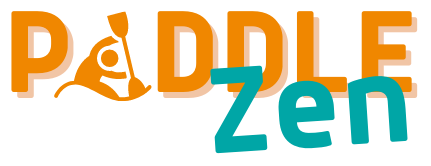A surfboard is the main equipment used in surfing. It is light, buoyant, but is strong enough to support you while you surf.
Originally known as papa he’e nalu, the first surfboard originated in Hawaii. It is typically made of their local wood, and can extend up to 15 ft. Not to mention that they are immensely heavy.
Today, there are many types of surfboards ranging from short, medium, and long in size. There are also various materials used in making surfboards, such as polyurethane (PU), wooden, soft-top, and epoxy boards.
Because surfboards are constantly developing, there exists various types of boards designed for specific purposes, and we are going to discuss them in this article.
1. Longboard
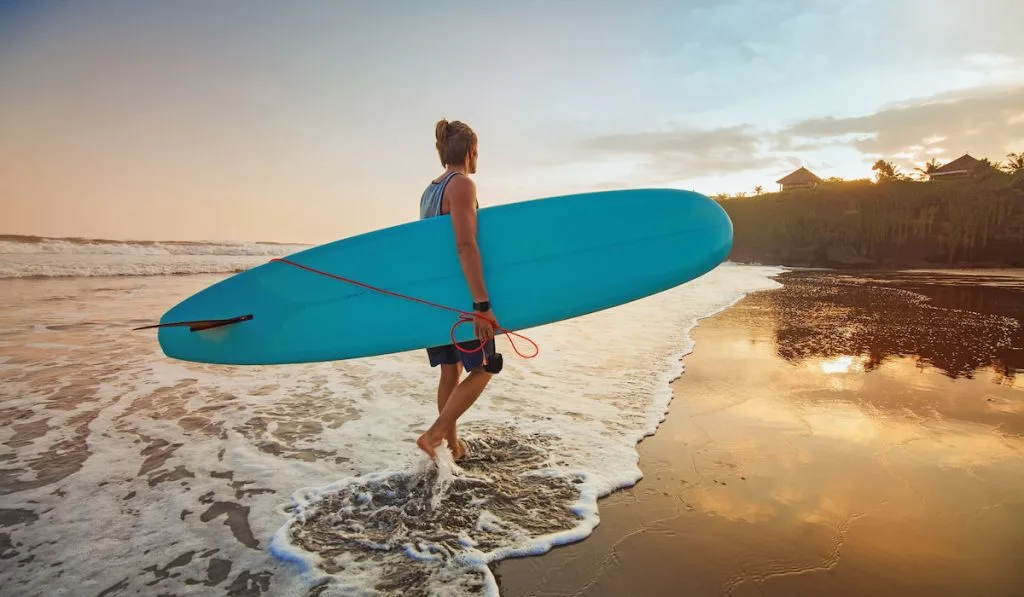
As its name implies, this type of surfboard is long. Measuring over 9 feet in length, longboards have either a blunt, or rounded nose, with many forward width, and wide tails.
Because this board is longer and wider compared to other types, this is more stable and can be ridden on the nose. Longboard is easy to paddle because of the high foam volume, making it highly buoyant.
Also, there’s a huge space on the board’s underside to sit on the water. However, it can be a bit of a challenge when you want to turn.
That said, this board is excellent for small surf because it positions perfectly in loose, summer waves. Longboards is considered the OG of surfboards since it exhibits a fashion, a tradition, and a rich history in surfing.
2. Shortboard
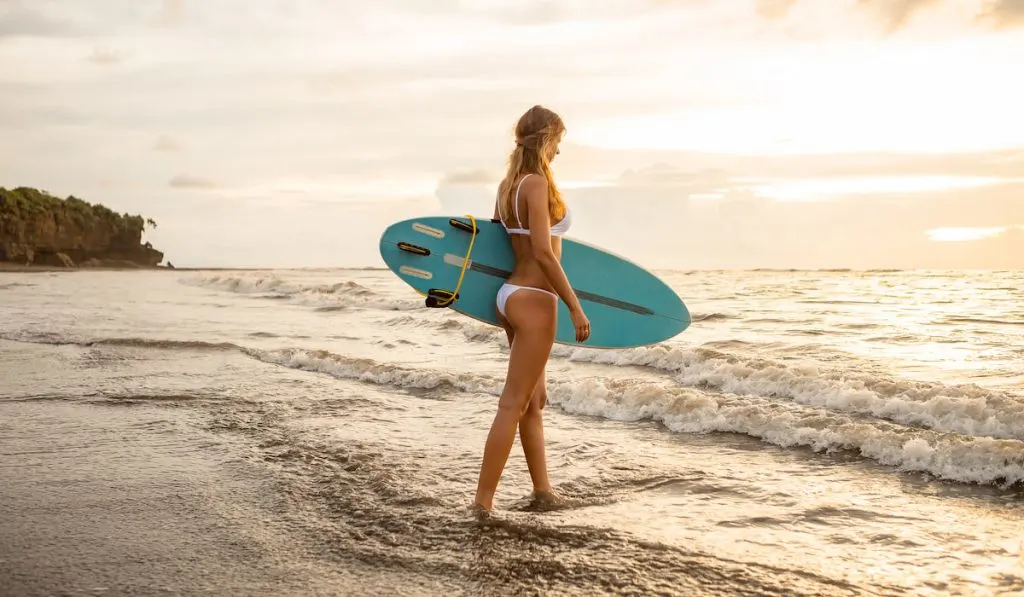
This type of board is fairly new compared to longboards. However, it is currently the most popular surfboard template in the world!
This classic surfboard was developed by Bob McTavish, Nat Young, and Dick Brewer when they modified the 9 feet longboard into under 7 feet surfboards.
As a result, about 95% of the surfers can be seen riding shortboards. Because of its size, it is simple to turn, easier to duck dive, and will react swiftly to the situation. However, it can be more difficult to paddle compared to longboards.
Meanwhile, the most popular fin setup in this board type is the thruster, or the tri-fin system.
3. Gun Board
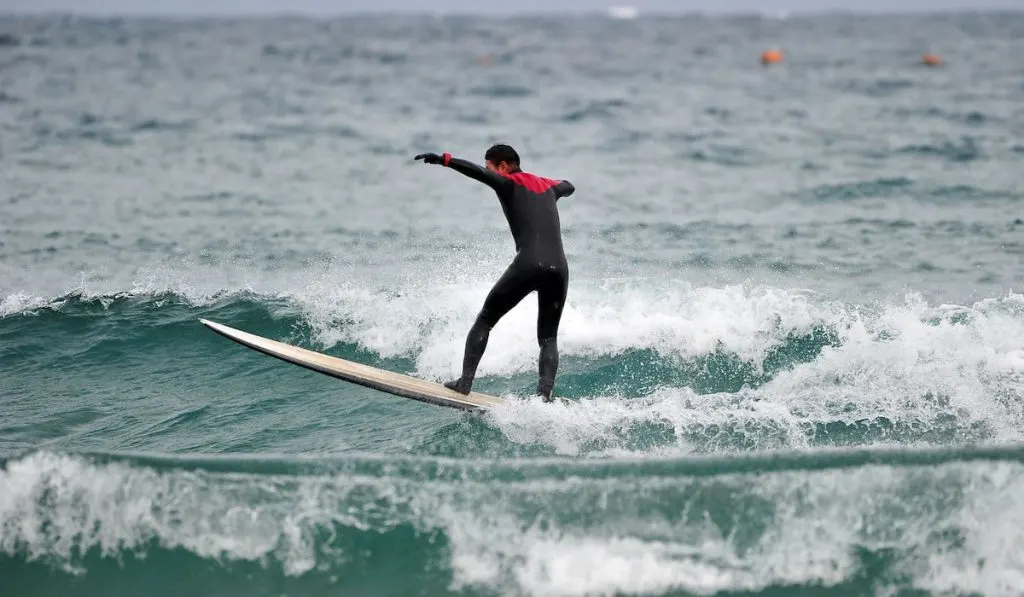
This board is designed for extreme surfing conditions, such as big waves. It is a large surfing board that measures between 7 to 12 feet in length.
Gun boards are thicker that allows them to surf on a really big wave. It also has a narrow nose and tail, with thruster as the fin setup.
Because they are specifically designed for unique characteristics of the wave, gun boards are easy to paddle and will quickly enter aggressive-looking waves. However, like the longboard, it won’t be easy to turn mainly due to its big size.
4. Tow-In Board
Tow-in boards are preferred by big wave surfers today. Compared to bigger and longer boards, it is built to handle extremely high speeds and unfavorable wave conditions with great control.
First introduced by Dick Brewer in the early 1990s, the tow-in board was first tested by Laird Hamilton.
This board is small, usually ranging from 5’5” to 6’2” in length. It has a wide tail and nose to balance the rails for more stability. In addition, it is furnished with a small quad and foot straps.
While it is heavier than the standard surfboard, it features a pin or swallow tails, with a thruster fin setup.
5. The Malibu/Funboard
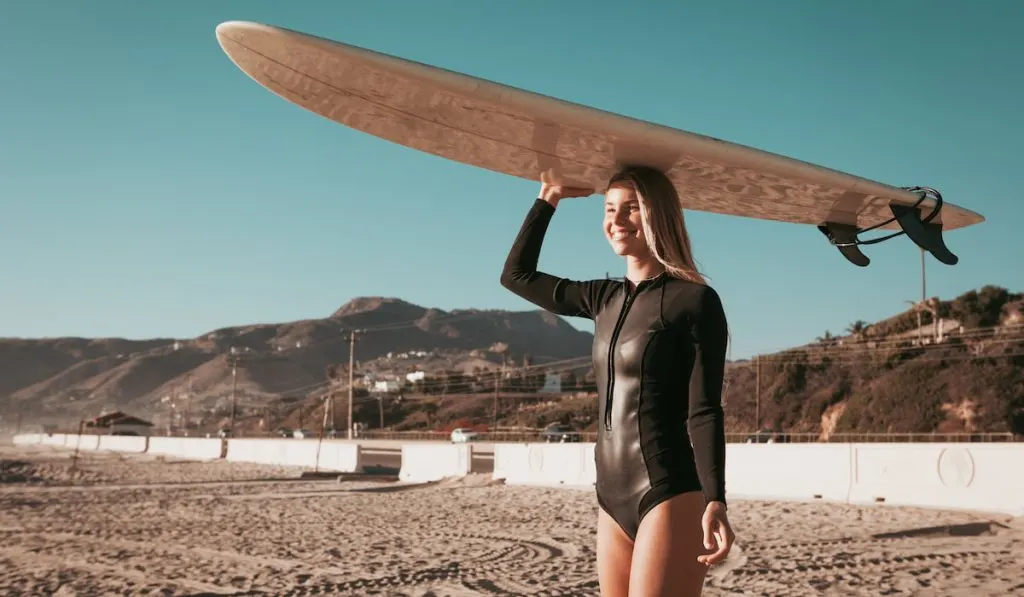
Named after the famous surfing spot in California, the Malibu is slightly smaller compared to the regular longboard. Its length ranges from 7’ to 8’6”, with a more curved nose and tail making it more stable and more maneuverable.
This board is best suited for newcomers, and novice surfers. Because of its smaller size, the Malibu can provide a steady and strong ride on any wave.
In fact, it is highly praised and has been a favorite among surfers because of its maneuverability and excellent performance.
Some tricks that can be performed with Malibu are “Hang Fives” and “Hang Tens.”
6. Fish Board
Developed from kneeboards in 1967 by Steve Lis, fish board is a small board, typically under 6 feet in length. This small yet fast surfboard is perfect for small waves.
It balances better and produces a lot of speed in small and medium waves. In addition, it features a twin fin set up and a fish-inspired tail.
The 1980 Retro Twin Fin by Mark Richards is one of the most known fish board models. This surfboard gained its popularity when the legendary surfer Tom Curren rode one in the early 2000s.
7. Stand-Up Paddleboard (SUP)
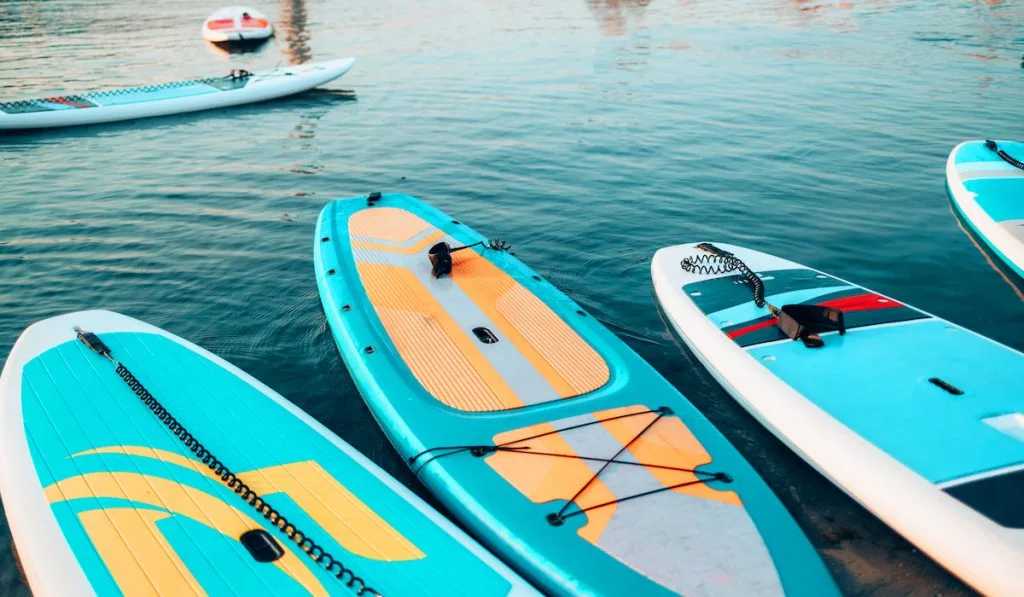
A stand-up paddleboard, or SUP, is a long, wide, and buoyant surfboard with a length of 10 to 12 ft. It is specifically designed to stand up while paddling across the water, as if you’re like “walking through the sea.”
SUPs are usually made of epoxy and fiberglass, but it is also available in inflatable version. It is perfect for small to normal waves, but it can also be used to cruise flat water spots, such as canals, lakes, and rivers.
8. Hybrid
A hybrid surfboard is a combination of any two similar board types. It is created to improve the performance of a surfboard, such as a board that can easily be turned and maneuver, stable, fast, and has a great balance.
9. Mini Mal
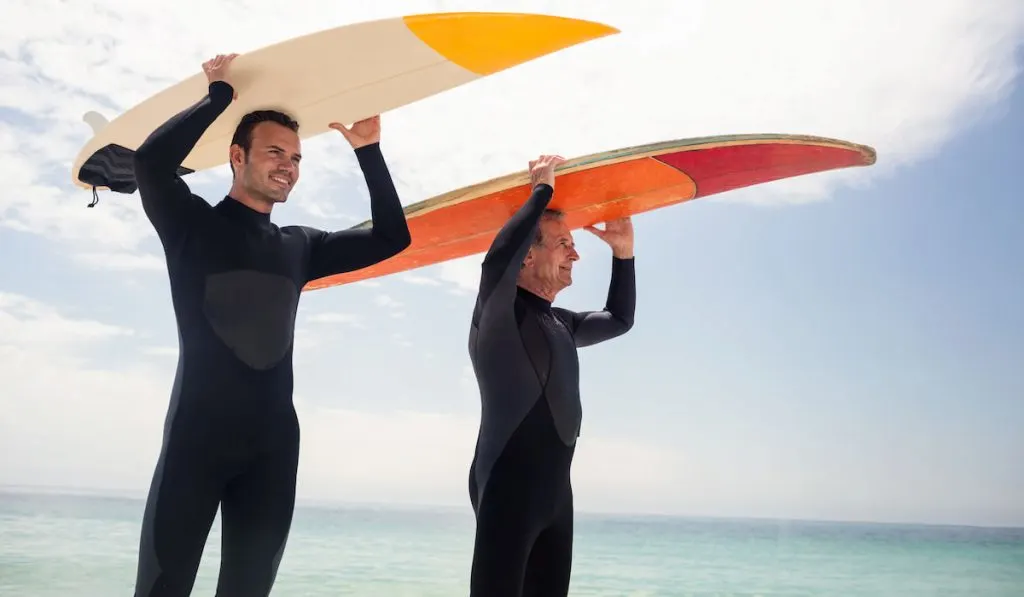
The Mini Mal, also called as Mid-Length surfboard is a smaller variety of longboard, typically ranging from 7 to 8 feet in length.
Like the longboard, it has a wide nose and longer rocker. But because of its smaller size, it can provide better stability and control. This board is best suited for beginners.
10. The 2+1
The 2+1 board, also referred to as “single fin with training wheels,” is an all-around, versatile board of the longboard family.
Because it takes both the features of a longboard and a tri-fin, the 2 + 1 board has better stability in steeper waves, is more rigid to surf, and has better maneuverability.
11. Mini Tanker
The Mini Tanker is a smaller version of the longboard. While it has the same features as the longboard, its smaller design makes it more agile and fast. Thus, the mini tanker is user friendly for inexperienced and lighter surfers.
12. Funboard
A popular type of surfboard, funboard is a mid-sized board, usually ranging from 7 to 8 feet in length.
It features the elements of a longboard and shortboard, and is well-suited for beginners and for those surfers who’s transitioning from longboard to shortboards.
The mixture of the longboard’s speed and the shortboard’s maneuverability makes this board a favorite among surfers.
13. Tandem
As its name implies, tandem boards are longer, wider, and thicker than the standard longboards mainly because it needs to carry the weight of two surfers, while providing stability and maneuverability.
The tandem board’s size varies depending on the weight of the team and the desired performance.
14. Olo
Olo is a type of traditional Hawaiian surfboard that is usually used by the Hawaiian chiefs and royalties. This type of board can exceed the length of 24 feet, and can weigh up to 90 kg. Its design is long, narrow, and is used to gently surf the sloping waves.
15. Alaia
Alaia is another type of traditional Hawaiian surfboard. While the Olo is used by royalties, the Alaia is used by commoners. It is a short, thin, and finless wooden board that is usually 17 ft in length.
It is used to surf fast waves, and most commonly made of koa, ulu, and wili wili or Hawaiian balsa wood.
However, modern Alaias are much thinner and shorter at about 6 ft in length. While the tail varies in design, this board is said to be difficult to ride.
And that ends our list. Now that you know about all types of surfboards, you can now choose which one best fits your experience and lifestyle!
If you find this article helpful, or you think someone you know may need to read this article, please feel free to share it with them.
References:
- https://www.surfertoday.com/surfing/the-most-common-types-of-surfboards
- https://www.everydaycalifornia.com/blogs/everyday-thoughts/surfing-101-types-of-surfboards
- http://www.surfedukators.com/common-types-of-surfboards/
- https://www.islesurfandsup.com/different-types-of-surfboards/
- https://www.sandiegosurfingschool.com/blogs/surfing/longboard-vs-shortboard-whats-the-difference
- http://www.surfscience.com/topics/types-of-surfboard/gun/the-gun
- http://www.surfscience.com/topics/types-of-surfboard/other/the-tow-in-surfboard
- https://en.wikipedia.org/wiki/Surfboard#Board_types_and_variations
- https://awe365.com/whats-a-malibu-longboard-and-why-buy-a-big-surfboard/
- https://www.thesurfboardwarehouse.com.au/blogs/board-advice-blog/board-types
- https://rustysurfboards.com/products/mini-tanker
- https://www.itsatandemsurf.org/tandem-surfboards.html
- http://oloalaia.com/surf-culture-olo-alaia/
